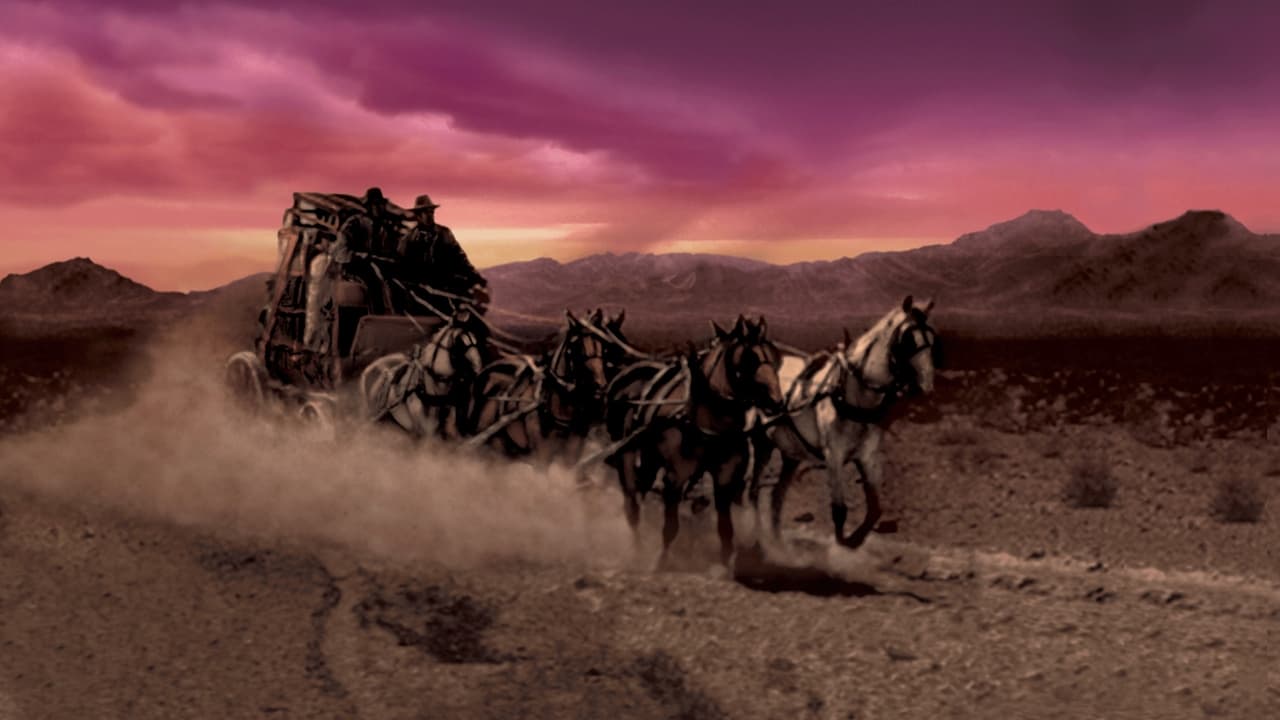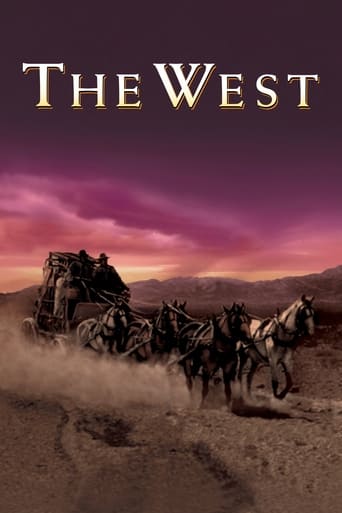

THE WEST is another lengthy, epic, in-depth documentary TV series produced by Ken Burns. It's not quite up there with his work on the Second World War or the Vietnam War, but it's certainly powerful stuff, full of emotional stories, fine editing, and engaging, human-centred narratives. The scope of the show is to explore American settlers and how they displaced the Native American peoples as they spread across the country from east to west. Famous incidents are looked at, from the fall of the Alamo to the Battle of the Little Bighorn, with figures such as Buffalo Bill and Sitting Bull included.
... View MoreThere was a million and one things happening in the old west, and for 8 hours this documentary ignores all of them except the Mormons, Blacks,natives, and Asians. sure they had their role but come on... Lets not write history in terms of race because in so doing it is incredibly racist. I found the series mind numbingly biased presenting little facts, or background on what was going on in the new frontier. We need a documentary showing the old west, this is not the one to do it. I found events and story lines I was hoping for missing completely. Where was the 'Wild West?' The gunslingers, the train robbers? So many criminals not even mentioned. Butch Cassidey, Sundance Kid, Jesse James, Doc Holiday. That list could go on forever. Also the only focused on two Indians: Sitting Bull and Chief Joseph. How about Geronimo? Crazy Horse gets barely a mention. So many events just glossed over and the viewer is left with mostly boring stories. Donner party barely gets a mention also. Oil is never even mentioned!
... View MoreThis documentary directed by Steven Ives (not Ken Burns, as several of the reviews in this thread inaccurately state) is a sweeping epic that showcases the salient moments in the settlement of the American West. Using historical documents, academic narratives, scenes of stunning natural beauty, and original photos and documents, "The West" is a gripping and historically accurate overview of this great (and, at times, terrible) period in American history.The reviews that complain that this series is somehow anti-American suffer from two flaws. The first is selection bias. Parts of "The West" feature cruelty and brutality, usually at the hands of white settlers. But to focus on this as the only distinguishing feature of the film ignores the numerous instances in which white people--e.g., Sam Houston, Brigham Young, Joseph Meek, just to take a few--are portrayed quite deservingly as heroes. Nor are all Native Americans portrayed in a positive light; the film also makes the point that the Lakota Sioux's claims to the Black Hills territory as their ancestral lands are somewhat ironic because the Lakota conquered the Kiowa and other tribes, driving them out of that area in conquests very similar to the Americans' accession of the West.The second error is simple oversensitivity. The history of the West is both a great and terrible story. It's great because it epitomizes the expansive American spirit that binds us together as a nation. It's terrible because in acquiring the West, we (Americans, that is) more or less decimated an entire people. I think those who refer to this process as genocidal are wrong, but not by much. The history of the West is thus not a story of good or evil, but a story of both, and the film "The West" shows this dialectic unflinchingly. If you have too delicate a constitution to accept that brutality and suffering are the flip side of manifest destiny's glory, you should not watch this documentary. "The West" does not seek to spare anyone's feelings, but rather only to tell the truth about this period in all its great and awful reality.
... View MoreStephen Ives directs this mammoth undertaking of the history of the West in America produced by Ken Burns. The film is mammoth in its length, at over 12 hours, but, more importantly, it makes a considerable effort to construct a balanced portrait of the West and its inhabitants: Europeans as well as Native Americans, Blacks, Mexicans, Chinese, etc. The film uses many actors and writers in voice overs to tell its astonishing stories, some familiar and some not so familiar.The series focuses on the many famous and not so famous individuals, who played a significant role in the development of the West in some way. Lewis and Clark, Kit Carson, Levi Strauss, Brigham Young, John Brown, William Quantrill, Mark Twain, Custer, Charles Goodnight, Black Kettle, Sitting Bull, Chief Joseph, Benjamin Singleton, Theodore Roosevelt, Frank Hamilton Cushing, William F. Cody, and Erskine Woods are just some of the many individuals touched upon that had some role in the gradual transformation of the West. Instead of just stories on each individual, Ives weaves in the many significant landmark events that the individuals either affected or took part in. The film explores virtually every major event of the 19th Century that even remotely had anything to do with the West. The film highlights the Lewis and Clark expedition, wagon trains, the California Gold Rush, the founding of San Francisco, the Mormons, the Sand Creek Massacre, Custer's Last Stand, the Transcontinental Railroad, the great buffalo herds and their dramatic disappearance, the origins of cattle drives and their transformation of the western economy, European Immigration, the origins of cowboys and cow towns, the Freedom Trail/Thieves Road, Little Big Horn and the necessity of using the U.S. Cavalry for protecting settlements, the western migration of Blacks, the Great Oklahoma Land Rush, and Wounded Knee as well as the history of specific Native Americans, such as the Lakotas and the Nez Perce. The film uses these individuals and events, as well as many others, to piece together a cohesive narrative that tells us a history that too few history books in schools contain. It is nothing less than the systematic assertion of one culture at the expense of others, specifically Native Americans. For instance, the population of Native Americans dropped from 150,000 to just 30,000 in 20 years from 1850-1870. By 1877, Indians were outnumbered by 40 to 1 in the West. Proportionally, the Indians lost over 100,000,000 acres of land to white settlers during this period. It illustrates how Native American genocide was directly proportional to American Government edicts, such as the Homestead Act and the Dawes Act, which denigrated Native American cultures, tribal ownership, and structure. This Act transformed many Native American communities into Americanized individuals. However, the film does not choose to present its views in a sentimental or even subjective manner, which makes its points about history and ultimately ourselves all the more poignant. There are several incidents that the film uses that lead up to the Native American disappearance, including the ethnic strife already present among miners during the Gold Rush. The American cultural browbeating of Mormons, Blacks, Mexicans, and Chinese occurs simultaneously during the American development and expansion of the West. The vignettes about the Carlyle Indian Industrial School in Pennsylvania and Frank Hamilton Cushing's infiltration into the Zuni Indians of the Southwest as an anthropologist and ethnologist suggest just how complete our intent was in living above Native Americans rather than with them. This intent was based more on our cultural ignorance than on any hate.Native Americans lived in community groups and we lived more as individuals, which is why it's no surprise that a mythic individual played more of a role in relegating Native Americans to second class status, however inadvertent, than any collective group of Americans, at least in popular culture and entertainment: William F. Cody. William F. Cody was Buffalo Bill, a shrewd businessman, who developed a touring wild west show to entertain the white American masses. The shows came complete with cowboy and Indian battles with the Americans always coming out on top. The film suggests that this is where the historical myth of whites being victimized by Indians originated, later carrying over to dime novels and movies. Likewise, William F. Cody reinvented himself in a role as Buffalo Bill and inhabited it, blurring myth and reality. Buffalo Bill becomes a metaphor for the U.S. Government's treatment of Native Americans, and coming at the end of the 19th Century, he's a metaphor for how America treated all other minority groups in its development of the West as well. Perhaps he's a metaphor for how we treat others even today. The film concludes with a vignette called "The Gift" about Chief Joseph, still another powerful example of how we misunderstood Native American culture. The film informs us, moves us, and teaches us in ways few history books can. The voice-overs are very interesting and moving at times. The cinematography is breathtaking and the musical bridges are wonderful, some of them (I believe) are authentic Native American songs. This is a towering achievement on a grand scale, yet with much to say to individuals with conscience. It is history as it should be told, uncompromisingly painful but truthful. It should be required viewing in every high school classroom. **** of 4 stars.* Note: Watch the silent film Tumbleweeds (1925) for one of the greatest action scenes of the silent era, the Oklahoma Land Rush scene.
... View More